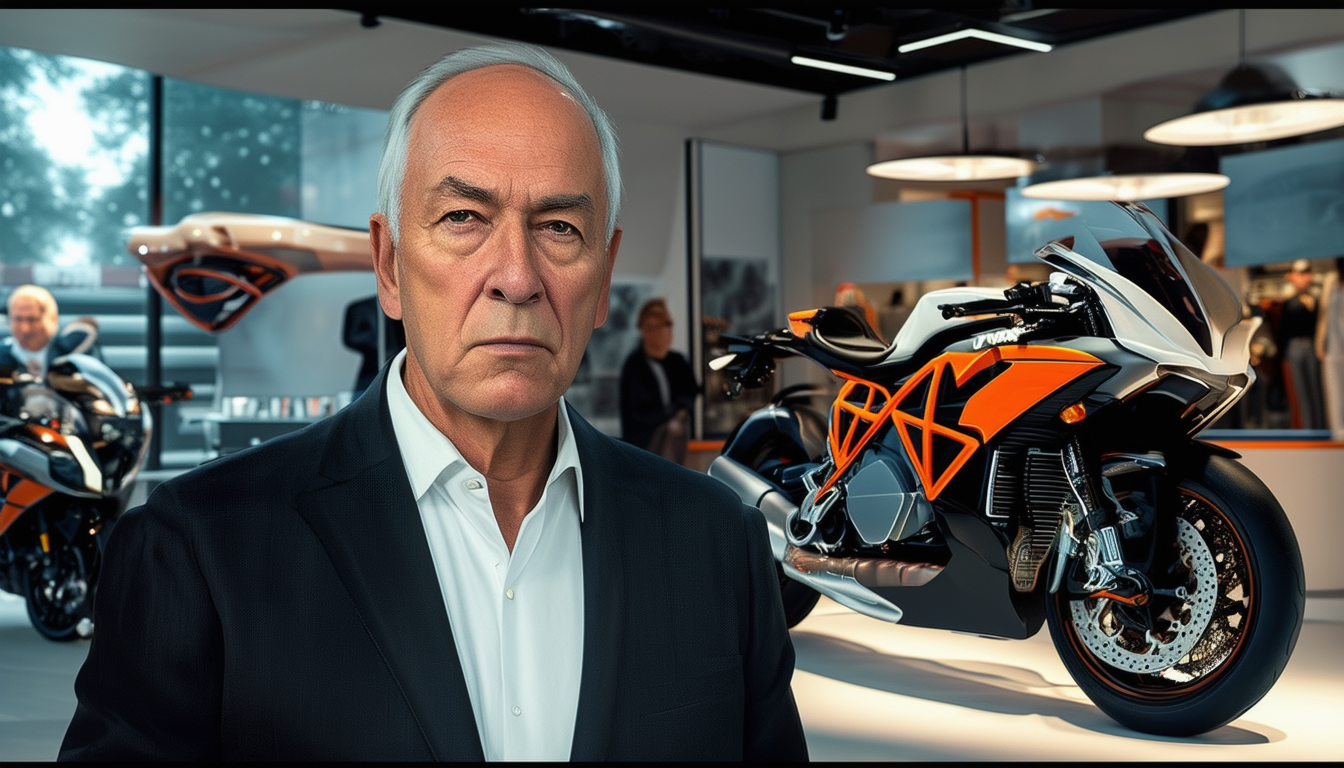Pierer, the Driving Force Behind KTM and MV Agusta, Faces Potential Insolvency Crisis

The motorcycle industry is buzzing with tension as Pierer Mobility AG, the parent company of renowned brands like KTM and MV Agusta, grapples with a looming insolvency crisis. Once a symbol of innovation and adventure, KTM has witnessed a significant downturn, compounded by various operational challenges. With sales dropping and quality concerns emerging, the future of this iconic brand hangs in the balance. The leadership, led by Stefan Pierer, is now tasked with navigating through these turbulent waters to secure the brand’s legacy and financial stability.
Pierer Mobility AG, the parent company of renowned motorcycle brands KTM and MV Agusta, finds itself on the brink of a significant financial crisis. After years of robust growth and reputation as a top manufacturer, recent circumstances have compelled the company to consider restructuring measures to avoid bankruptcy. With a notable decline in sales, production halts, and mounting debt, the situation has raised alarms within the motorcycle manufacturing industry.
The Rise of KTM Under Pierer’s Leadership
In the early 1990s, KTM was a modest motorcycle manufacturer producing around 6,000 units annually. Under the guidance of Stefan Pierer, however, the company experienced a remarkable transformation. Following investments from Indian automotive giant Bajaj Auto, KTM evolved into one of Europe’s leading motorcycle brands, especially favored by off-road and adventure enthusiasts.
Pierer’s strategic acquisitions of iconic brands like MV Agusta and Husqvarna bolstered KTM’s position in the competitive market. This expansion allowed KTM to target diverse customer segments, from casual riders to hardcore off-road enthusiasts, cultivating a loyal customer base and significant market share.
Current Financial Woes
Despite past successes, KTM is currently facing serious financial challenges. Sales figures have decreased by 27% in comparison to the first half of 2023, leading to layoffs of nearly 600 workers and a temporary pause in production. The company is also grappling with a public relations crisis regarding quality control, specifically a camshaft wear issue affecting popular models such as the 790, 890, and 901.
Moreover, revelations surrounding various warranty policies across model ranges and contentious decisions to manufacture engines in China have further tarnished KTM’s reputation. As competitors tighten their grip on market shares, the once-thriving KTM brand now finds itself in dire straits.
Implications of Restructuring Measures
Recently, Pierer Mobility entered into a self-administration process, a legal scheme that permits a 90-day timeframe to reorganize and secure the necessary financing. This move is being described as a “pit stop” in an attempt to revive the company before facing insolvency. However, the restructuring primarily affects KTM AG, and the potential ripple effects on its subsidiaries are concerning for dealers and consumers alike.
As market pressures mount, Pierer Mobility must act quickly to navigate these turbulent waters. Without new funding or a viable buyer, the company risks losing significant assets to satisfy its creditors.
Future Prospects for KTM and MV Agusta
While Pierer Mobility has a legacy of successful operations, industry analysts remain skeptical about its ability to recover. The substantial debt load, compounded by decreased profits and waning consumer interest, poses considerable risks for the brand’s future. With a market cap that has plummeted dramatically since 2021, the stakes are high for both KTM and MV Agusta.
In order to rebound, the company may need to sell off underperforming assets or restructure its product offerings. This period will be critical for determining how effectively Pierer Mobility can sustain its brands in the face of financial adversity.
As a legendary figure in the motorcycle industry, Stefan Pierer has successfully led KTM and MV Agusta through various challenges. However, the recent developments suggest a looming insolvency crisis for Pierer Mobility AG, the parent company. Financial difficulties and declining sales have put pressure on the brand, raising concerns about its future in the competitive motorcycle market.
Understanding the Financial Strain
The financial landscape for Pierer Mobility AG has changed dramatically in recent months. With reports indicating a 27% decline in sales compared to the first half of 2023, the company is struggling to maintain its market position. This downturn has been exacerbated by rising operational costs and ongoing tensions in the European motorcycle industry. Riders may feel the impact as their preferred brands face uncertain times.
Addressing Production Challenges
KTM’s ambitious production goals, which once reached nearly 1,000 motorcycles per day, are now being reassessed. The company is pausing production to better align with market demand and investigate quality issues that have sparked consumer concerns. For enthusiasts, it’s essential to stay informed on how these adjustments may affect model availability and overall brand reliability.
The Importance of Quality Assurance
Recently, there have been controversies regarding the build quality of certain models, particularly concerning engine performance. Addressing these quality concerns is critical for KTM if it aims to regain the trust of its riders and enthusiasts. Quality assurance processes should be emphasized to reassure the biking community about the durability and performance of their investments.
Strategies for Recovery and Growth
To navigate this challenging period, Pierer Mobility AG needs to enhance its partnerships and explore new investment opportunities. Collaborations with established companies and attracting more investors are crucial steps toward stabilizing the brand. Engaging with the community through events and outreach will help strengthen customer loyalty and foster a supportive environment for the brand’s revival.
Lessons from Past Resilience
Pierer Mobility has weathered storms in the past, demonstrating a resilience that can inspire confidence among its supporters. By learning from earlier challenges and adapting to changing market dynamics, the company can chart a path forward. The commitment to innovation and excellence in product offerings remains vital to attracting the next generation of riders.






